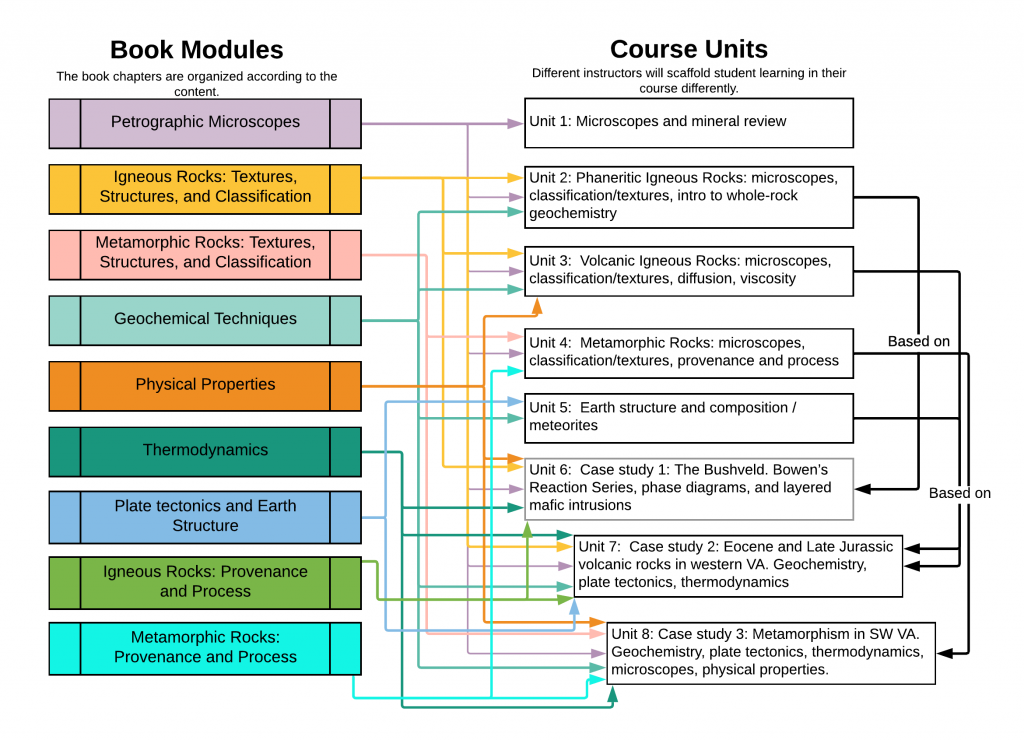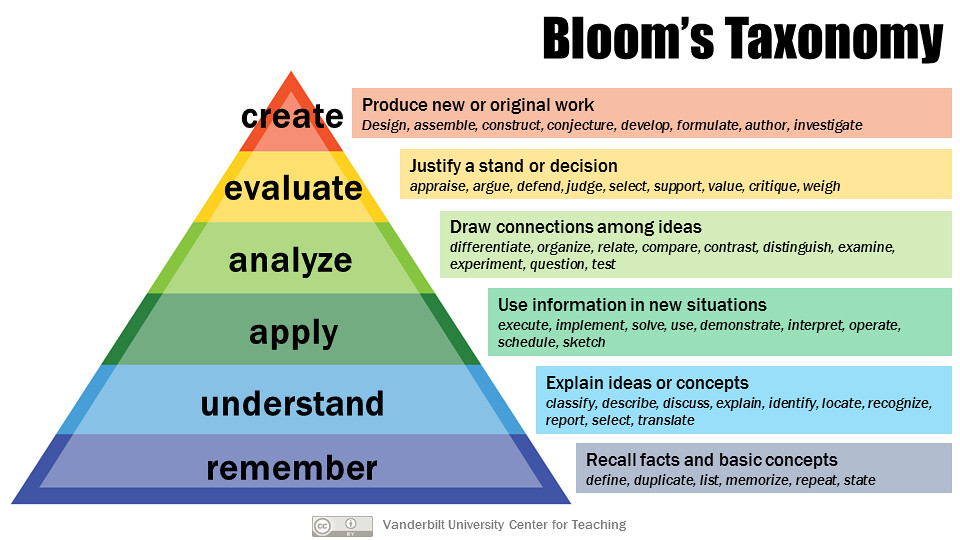1.2: How is This Book Organized?
- Page ID
- 11099
This book is in initial stages of development. The authors received a VIVA Course Redesign Grant to create Module 2 (Microscopes). Further modules will be created as we secure additional resources.
Learning Objectives
Students will be able to:
- Compare the organization of learning modules to the organization of a petrology course that scaffolds learning.
- Match examples of questions or exercises to the appropriate level in Bloom’s taxonomy.
Prior Knowledge and Skills
None
Organization of This Book
This book is arranged in modules to make it easy for students to access what they need to learn for their course. Instructors are encouraged to use modules that are relevant to their course, and to rearrange the order in which modules or chapters are used to fit the needs of their curricula and syllabi. Each module comes with a list of learning objectives and outcomes to guide this process.
In other words, the modules of this book (especially in the first half of the book) are arranged by topic as you would find them in a reference book. This may be different from the order that your instructor may choose to present these materials during the course.
Organization of A Petrology Course: An Example
Author Elizabeth Johnson’s Introduction to Petrology course at James Madison University is an example course which uses the content from modules in this book but does not present materials in the order in which they are compiled.
The learning outcomes for this course are:
Course Learning Goals
Students will be able to:
- Observe and describe the mineralogy and textures of igneous and metamorphic rocks in hand sample and thin section;
- Classify igneous and metamorphic rocks using standard hand sample, thin section, and geochemical schemes;
- Interpret the geologic history of igneous or metamorphic rock and connect it to plate tectonic processes using textural, geochemical, and thermodynamic observations and models;
- Create and modify hypotheses to explain geochemical and petrologic data.
The diagram below maps the modules from the book (Book Chapters) to their use in the course through a typical semester using color-coded arrows. The course is subdivided into units, with Unit 1 covered at the start of the semester, and Unit 8 concluding the semester.

This is a complicated diagram, but there are two main observations:
- Chapters from within each textbook module are used or re-introduced in multiple course units; and
- Course units in the last half of the semester build upon and expand knowledge from units in the first half of the semester.
The course uses a “spiral” approach to student learning (Knowles and Cole, 1994), in the sense that content and concepts are revisited and built upon as the course progresses. Units 1-5 cover microscope skills, classification, basic geochemistry, and texture and mineral identification for igneous and metamorphic rocks. Units 6-8 require students to apply these skills to case studies and add additional skills in geochemistry, thermodynamics, and plate tectonics / structural geology. Students are able to apply core skills at least twice during the semester.
Bloom’s Taxonomy
Petrology is often in the middle of the sequence of required courses for a traditional geology major. Generally, introductory and/or historical geology and mineralogy are meant to be taken before this course, and various courses such as structural geology, stratigraphy, upper-level electives, and a field course might be taken after petrology. The exact courses may vary for your curriculum, of course.
Because petrology is often a transition from lower-level to upper-level courses, the course might include assignments that start at the “remember” “understand” and “apply ” levels, and then transition into “analyze,” “evaluate,” and “create” levels by the end of the course.

Guided Inquiry
Question \(\PageIndex{1}\)
Question \(\PageIndex{2}\)
References
Armstrong, P. Bloom’s Taxonomy. Retrieved 7/1/2019 at https://cft.vanderbilt.edu/guides-sub-pages/blooms-taxonomy/
Knowles, J. G. and Cole, A. L. (1994) Through Preservice Teachers’ Eyes: Exploring Field Experiences through Narrative and Inquiry New York: Macmillan. p. 61.
Table of Contents


